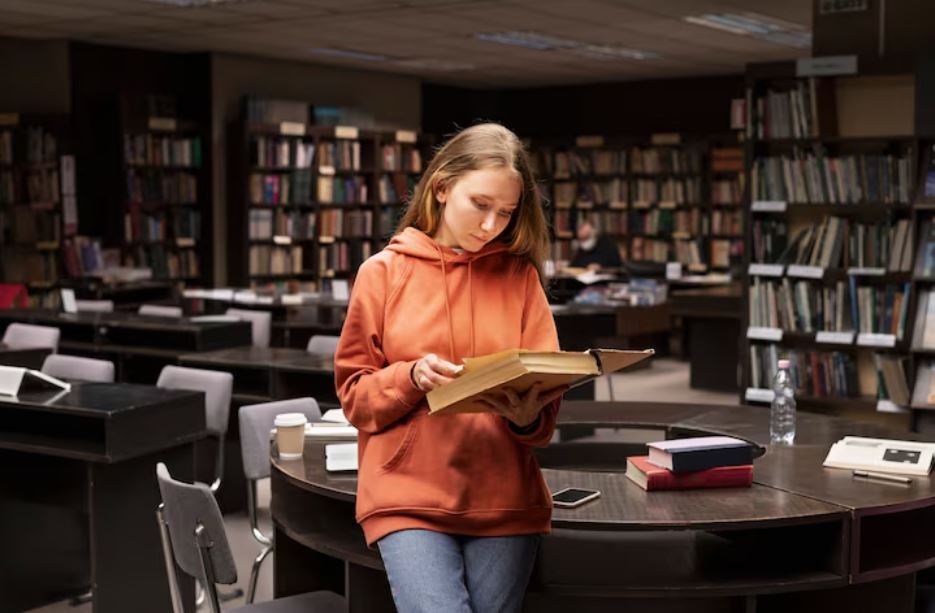
Boston College Libraries serve as Chestnut Hill’s intellectual pillars, securing a campus where innovation and tradition coexist peacefully. With 1,400 study spaces that are extraordinarily adept at fostering both individual attention and collaborative energy, O’Neill Library is a hive of academic activity. With an air of urgency reminiscent of athletes in training, students move past glowing computer displays while holding steaming coffee in anticipation of deadlines.
But the rhythm of the Bapst Library is very different; its Gothic architecture serves as a reminder that beauty in and of itself can stimulate intellectual inquiry. Often referred to as one of America’s most beautiful libraries, Bapst is especially helpful for those who want to study alone. It provides more than 50,000 titles to art and architecture academics in 400 study locations. Its arching halls provide the impression that information is not only valued but also absorbed here.
Boston College Libraries – Key Information
| Category | Information |
|---|---|
| Institution | Boston College, Chestnut Hill, Massachusetts |
| Library Network | Includes O’Neill, Bapst, Burns, Theology & Ministry, Law, Social Work, O’Connor, and Educational Resource Center |
| Total Volumes | Nearly 3 million books and journals |
| Digital Access | Databases, eScholarship@BC, digitized collections |
| Special Collections | Largest Irish collection in the U.S. (Burns Library), rare legal manuscripts |
| Study Spaces | 1,400 seats in O’Neill, 400 in Bapst, plus group study rooms across campus |
| Unique Facilities | Connors Family Learning Center, multimedia classrooms, technology labs |
| Historical Highlights | Bapst served as main library from 1925–1984, later replaced by O’Neill |
| Website | https://library.bc.edu |
Often referred to as the crown jewel, Burns Library enhances the educational experience by providing students with access to rare manuscripts and collections that are incredibly resilient. Its collections draw scholars from throughout the world and house the biggest Irish collection in the United States. Burns is incredibly broad and includes original writings by major figures, Nobel laureates, and saints. Entering the building nearly feels like reestablishing contact with ancestors’ voices for students of Irish descent.
By providing incredibly effective resources to facilitate rigorous legal research, the Law Library sharpens focus. Works by and about St. Thomas More are among the centuries-old manuscripts preserved in the Coquillette Rare Book Room. The availability of these books gives law students a very apparent link between historical ideas and current discussions, serving as a reminder that law is both practice and philosophy, influenced by centuries of ideas.
The Social Work Library in McGuinn Hall has a significant influence despite its very low design cost. It provides study spaces and computer labs where aspiring social workers can get ready for jobs that would drastically lower inequality. For them, having access to practice manuals and digital journals is very novel since it keeps them prepared for obstacles they may face in the real world.
With almost 250,000 volumes on Catholic theology, biblical studies, canon law, and Jesuit history, the Theology and Ministry Library is equally impressive. Exhibitions focusing on faith, art, and identity are held in its atrium gallery. It illustrates how moral investigation and intellectual pursuit can coexist peacefully by fusing scholarship with spiritual context.
With resources for K–12 instruction, interactive classrooms, and digital teaching tools, the Educational Resource Center (ERC) furthers this adaptability. Compared to traditional textbook collections, its offers for aspiring instructors adjust to new approaches far more quickly. During fieldwork, many graduates remember how having access to this area significantly increased their confidence as teachers.
Scientific riches can be found in the O’Connor Library at Weston Observatory, which is a little less well-known but highly specialized. It is a very dependable research center for individuals who are interested in the erratic forces of Earth, with a focus on seismology, geology, and geophysics. Its records have helped scientists better understand earthquakes and turn raw data into methods that can save lives.
Boston College libraries have successfully embraced digital expansion beyond the physical realm. Researchers can reach a global audience with eScholarship@BC, which also provides open-access publication options. Boston College has greatly lowered the barriers to obtaining scholarly output by utilizing cutting-edge digital archives. Particularly creative has been the move to online collections, demonstrating that libraries can change as fast as any tech firm.
They have an outer cultural resonance as well. The institution is connected to literary traditions that influenced Ireland and Europe through exhibitions such as The Genius of Genre: The Pen Names and Personas of Flann O’Brien. Since both authors capture the satire and battle of contemporary identity, comparisons to James Joyce are unavoidable. This capacity to establish links between global personalities and campus materials exemplifies how Boston College libraries enhance both local academics and worldwide dialogue.
Their resilience was put to the strain during the pandemic, but internet access significantly enhanced their ability to adapt. Virtual consultations, extended interlibrary loans, and remote services became incredibly useful lifelines for students. The libraries showed that they are active educational partners rather than passive structures during a period when isolation hampered academic advancement.
The impact on society is still evident. Boston College libraries are more than just places to keep books; they are organizations that influence the production, preservation, and dissemination of information. Alumni remember transformative experiences with manuscripts in Burns, inspirational mornings in Bapst, or late nights in O’Neill. These libraries served as emotional support systems for many people in addition to academic resources; they were havens where worries were reduced, curiosity was piqued, and futures were planned.
Given the breadth of resources they offer, their economic worth is shockingly low. They serve as meeting places that foster intellectual communities on a social level. They improve Boston College’s standing among international academic institutions on a cultural level.











